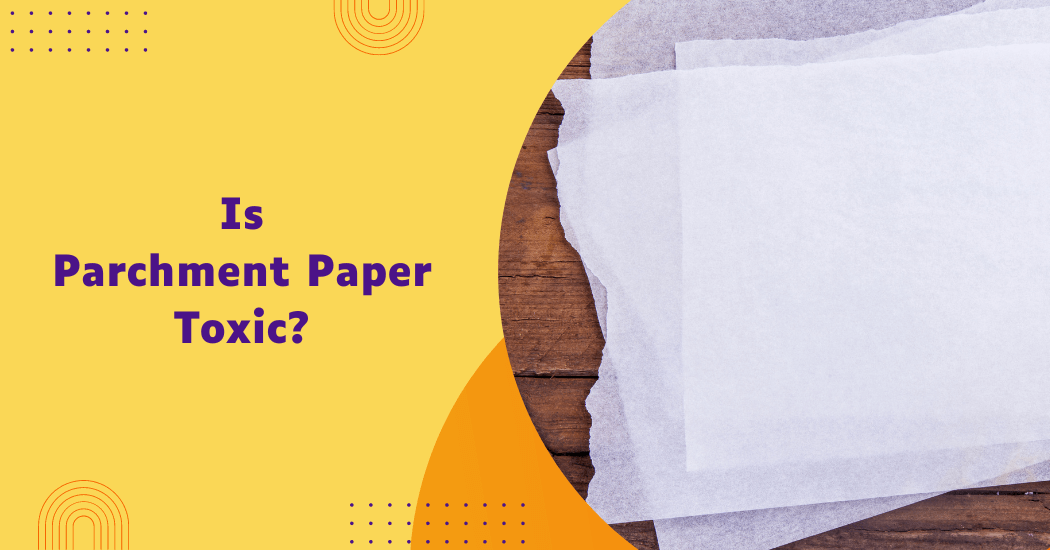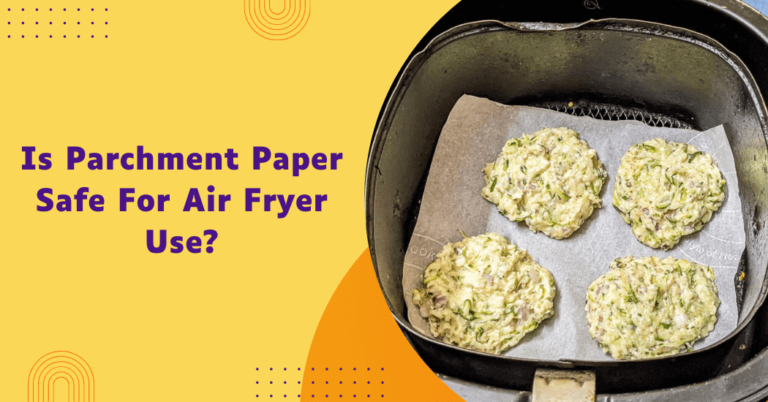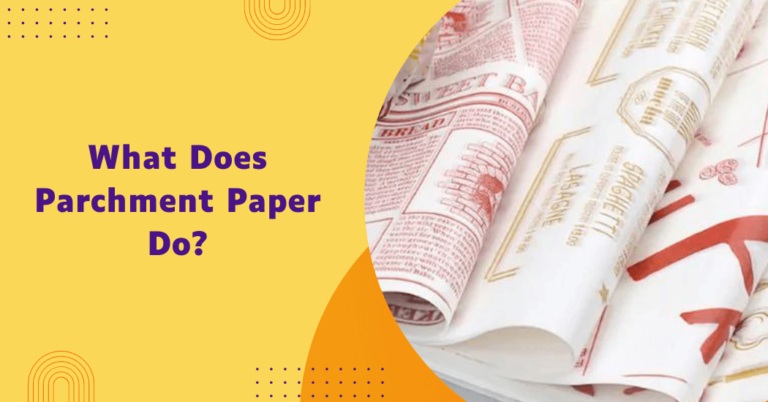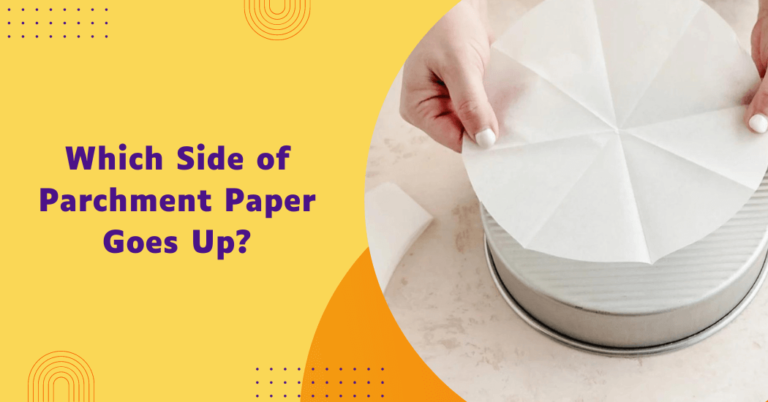Is parchment paper toxic?
Parchment paper has long been a staple in kitchens worldwide, valued for its non-stick properties and ability to withstand high temperatures. However, concerns have arisen regarding its safety and potential toxicity when exposed to heat during cooking.
As consumers increasingly prioritize health-conscious choices in their culinary practices, understanding the safety of parchment paper becomes paramount. This exploration delves into the question: Is parchment paper toxic?
By examining its composition, production processes and potential health implications, we aim to provide clarity on whether this kitchen essential poses any risks to human health.
Is Parchment Paper safe to cook with?
Parchment paper is a moisture-resistant and non-stick paper made from cellulose fibres extracted from plant sources such as wood, cotton or flax. The raw materials are processed to remove lignin, hemicelluloses and other impurities, resulting in pure cellulose pulp. The pulp is then bleached, refined and mixed with water to form a slurry.
When it comes to potential additives, most high-quality parchment paper products are designed to be free from harmful chemicals.
Silicone-coated parchment, in particular, is noted for its safety and non-toxic properties, as silicone is a stable, inert material that does not react with food or produce toxic fumes when heated.
However, it’s essential for consumers to check product labels for any certifications regarding food safety and to opt for parchment paper that is explicitly marked as food-grade.
Overall, the production process of parchment paper involves minimal chemical additives, making it a relatively safe and eco-friendly option compared to other non-stick materials such as Teflon.
Is parchment paper toxic?
Parchment paper is generally considered safe for cooking and baking purposes. When used within recommended temperature limits, parchment paper is not toxic and does not release harmful chemicals into food.
However, it’s essential to use parchment paper specifically designed for cooking and baking purposes. Using non-food-grade parchment paper such as wax paper or paper towels, can be harmful because they may contain substances not intended for direct food contact.
One study published in 2015 found that heating commercial parchment paper at 220°C for 20 minutes released chemicals such as polydimethylsiloxane (PDMS) and Polymethylhydrosiloxane (PMHS) into the air.
While these chemicals are deemed safe for use in food packaging and contact materials, their effects on human health when inhaled are still under investigation.
Additionally, some studies have suggested that at extremely high temperatures (above 400°C), parchment paper may release PFOA (perfluorooctanoic acid), a chemical linked to health concerns.
However, these high temperatures are not typically reached during cooking and are more likely to occur in industrial settings.
Factors that may affect parchment paper safety
While parchment paper is generally safe for cooking and baking, certain factors may impact its safety, such as:
- Quality of the parchment paper: It’s essential to use high-quality, food-grade parchment paper that is explicitly designed for cooking and baking purposes.
- Temperature limits: Parchment paper is not meant to be used at extremely high temperatures. Exceeding recommended temperature limits may cause the paper to burn or release chemicals into the food.
- Length of exposure: The longer parchment paper is exposed to high temperatures, the higher the likelihood of chemical release. It’s essential to follow cooking times and pay attention to any changes in the appearance or odour of the paper.
- Additives in coloured or printed parchment paper: Some parchment papers may have added colour or designs, which could potentially contain harmful dyes or chemicals. It’s best to opt for plain, unbleached parchment paper to avoid any potential risks.
- Personal sensitivity: As with any material, some individuals may be more sensitive to certain components in parchment paper. If you experience any adverse reactions when using parchment paper, it’s best to consult a healthcare professional.
Potential toxicity concerns
While parchment paper used in cooking and baking is generally safe, there are some potential concerns to keep in mind. These include:
- Inhaling chemicals: Heating parchment paper at high temperatures (above 220°C) may release chemicals into the air that can be potentially harmful when inhaled.
- Using non-food-grade parchment paper: It’s crucial to use parchment paper explicitly designed for cooking and baking to avoid any potential hazards from non-food-grade materials.
- Reusing parchment paper: Parchment paper should only be used once, as reusing it may increase the risk of chemicals leaching into food.
- Storage conditions: Keeping parchment paper in damp or humid environments may cause mould growth, which can release toxins when heated.
- Scratching or damaging silicone-coated parchment: Scratches or damage to the silicone coating may cause it to release into food, potentially leading to the ingestion of small amounts of silicon.
- Allergic reactions: Some individuals may have allergies or sensitivities to certain substances found in parchment paper, such as silicone or cellulose fibres.
Tips for safely using parchment paper
To ensure the safety of using parchment paper in cooking and baking, follow these tips:
- Use high-quality, food-grade parchment paper explicitly designed for cooking and baking purposes.
- Avoid exceeding recommended temperature limits (usually up to 230°C/450°F).
- Do not reuse parchment paper after use.
- Store parchment paper in a cool, dry place away from moisture and humidity.
- Avoid using coloured or printed parchment paper, as these may contain harmful dyes or chemicals.
- Use caution when handling silicone-coated parchment to avoid scratching and damaging the coating.
- If you experience any adverse reactions while using parchment paper, consult a healthcare professional.
By following these tips and understanding potential risks, you can safely use parchment paper for all your cooking and baking needs.
Always prioritize using high-quality, food-grade parchment paper to ensure the safety of yourself and those consuming your food.
Comparison of parchment paper with other materials
| Material | Composition | Production Process | Potential Health Risks |
|---|---|---|---|
| Parchment Paper | Cellulose fibers, silicone coating | Minimal chemical additives | None at recommended temperature limits |
| Teflon | Polytetrafluoroethylene (PTFE) | Heat treatment and polymerization | Releases toxic fumes at high temperatures |
| Aluminum Foil | Aluminum | Rolling and annealing process | Potential risk for aluminum toxicity |
| Wax Paper | Waxed paper | Coated with paraffin wax | May contain harmful dyes or chemicals |
| Silicon Mat | Silicone | Molded and cured | Generally considered safe for cooking |
Alternatives for individuals with specific health concerns
While parchment paper is generally safe for most people, individuals with specific health concerns may want to consider alternatives. For example:
- Non-stick cookware: Those concerned about the potential risks of using parchment paper at high temperatures can opt for non-stick cookware, such as ceramic or enamel-coated pans.
- Uncoated baking sheets: Individuals sensitive to silicone or cellulose fibres may want to use uncoated baking sheets for their cooking and baking needs.
- Aluminium foil: While aluminium foil has its potential risks, it can be a suitable alternative for those with silicone or cellulose sensitivities.
- Natural parchment paper: Some brands offer unbleached, natural parchment paper made from unbleached wood pulp and without any chemical additives. This may be a better option for those concerned about potential toxins in traditional parchment paper.
- Silicone baking mat: A silicone baking mat can be a suitable alternative for parchment paper, as it is made from food-grade silicone and can withstand high temperatures.
Ultimately, the best alternative will depend on an individual’s specific health concerns and sensitivities. It’s always essential to carefully research and consider all options before making a decision.
Overall, parchment paper remains a popular choice for its convenience and versatility in cooking and baking.
FAQs
Does parchment paper contain any harmful chemicals?
The parchment paper used in cooking and baking is generally safe but it may contain minimal chemical additives. It’s essential to use high-quality, food-grade parchment paper from reputable brands to minimize any potential risks.
Is parchment paper safe for all types of cooking and baking?
Parchment paper is suitable for various cooking and baking methods, such as roasting, baking and steaming. However, it’s crucial to follow recommended temperature limits and avoid using parchment paper in open flames or broilers.
Is silicone coated parchment paper safe?
Silicone-coated parchment paper is generally considered safe for cooking and baking, as long as the coating is not scratched or damaged. It’s essential to handle it with care to avoid any potential release of silicone particles into food.
Final Words
In conclusion, parchment paper is generally considered safe for cooking purposes. Its non-stick properties and heat resistance make it a popular choice in kitchens worldwide.
However, it’s crucial to use parchment paper as intended and avoid exposing it to extremely high temperatures or direct flames to prevent potential chemical reactions.
When used correctly, parchment paper is a reliable and convenient tool for baking and cooking without posing significant toxicity risks.




